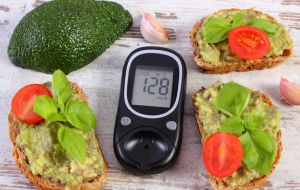A Teen’s Healthy Eating Tips
Busy social lives, extracurricular activities, and pressures to succeed in school might not leave many teens with extra time to think about nutrition. And while it may seem easy at this age to pull an all-nighter by guzzling energy drinks, no body can keep up that pace forever. Optimizing nutrition can help maintain stamina for the long haul—by supporting instead of compromising well-being. A quality diet during these years can also help predict a lifetime of good health.
A quality diet during these years can also help predict a lifetime of good health
DRIs Defined
- DRIs = Dietary Reference Intakes. These values include RDAs, AIs, and ULs.
- RDA = Recommended Dietary Allowance. The average daily level that most healthy people need to prevent a deficiency. RDAs vary by age and gender.
- AI = Adequate Intake. Used when there is not enough information to develop an RDA. A “best guess” amount based on the available evidence.
- UL = Tolerable Upper Intake Level. The maximum daily intake that is unlikely to cause harm with long-term use.
Remember to get enough....
Calcium: The bulk of bone development takes place during the teen years, but many teens don’t get enough of this mineral.
- Dietary Reference Intakes (DRIs)
- Recommended Dietary Allowance (RDA): 1,300 mg
- Upper Intake Level (UL): 3,000 mg
Choline: The body makes some choline, but the rest needs to come from the diet.
- Dietary Reference Intakes (DRIs)
- Adequate Intake (AI) boys: 550 mg
- Adequate Intake (AI) girls: 400 mg
- Upper Intake Level (UL): 3 grams
Folate: Folate helps lower the risk of a group of birth defects called neural tube defects. Girls and women who are or may become pregnant need to get enough folate to ensure the health of their unborn baby.
- Dietary Reference Intakes (DRIs)
- Recommended Dietary Allowance (RDA): 400 mcg
- Recommended Dietary Allowance (RDA) pregnancy: 600 mcg
- Recommended Dietary Allowance (RDA) lactation: 500 mcg
- Upper Intake Level (UL): 800 mcg
Iodine: This nutrient is especially important for pregnant girls and women. Iodine deficiency in utero can lead to severe mental retardation in the infant, miscarriage, and stillbirth. Severe deficiency is uncommon in most places, but even mild deficiencies may cause developmental problems in babies and children.
- Dietary Reference Intakes (DRIs)
- Recommended Dietary Allowance (RDA): 150 mcg
- Recommended Dietary Allowance (RDA) pregnancy: 220 mcg
- Recommended Dietary Allowance (RDA) lactation: 290 mcg
- Upper Intake Level (UL): 900 mcg
Iron: Teenage girls, pregnant girls and women, and girls and women with heavy menstrual periods are at increased risk for iron deficiency and anemia. Vegetarian teens may need to get about two times as much iron in their diets as meat eaters, as the iron in plant foods isn’t absorbed as easily.
- Dietary Reference Intakes (DRIs)
- Recommended Dietary Allowance (RDA) boys: 11 mg
- Recommended Dietary Allowance (RDA) girls: 15 mg
- Recommended Dietary Allowance (RDA) pregnancy: 27 mg
- Recommended Dietary Allowance (RDA) lactation: 10 mg
- Upper Intake Level (UL): 45 mg
Vitamin A: Food and supplement labels list vitamin A in International Units (IUs), but as the availability of vitamin A to the body varies depending on the source, nutritionists use “Retinol Activity Equivalents” (1 IU of vitamin A (retinol) = 0.3 mcg RAE).
- Dietary Reference Intakes (DRIs)
- Recommended Dietary Allowance (RDA) boys: 900 mcg RAE
- Recommended Dietary Allowance (RDA) girls: 700 mcg RAE
- Recommended Dietary Allowance (RDA) pregnancy: 750 mcg RAE
- Recommended Dietary Allowance (RDA) lactation: 1,200 mcg RAE
- Upper Intake Level (UL): 2,800 mcg RAE (9,333 IU)
Vitamin B12: Vegetarian or vegan teens might be at risk for B12 deficiency. The risk is even greater for pregnant and breastfeeding girls and women. Severe vitamin B12 deficiency in these groups can cause irreversible neurological damage to the baby.
- Dietary Reference Intakes (DRIs)
- Recommended Dietary Allowance (RDA): 2.4 mcg
- Recommended Dietary Allowance (RDA) pregnancy: 2.6 mcg
- Recommended Dietary Allowance (RDA) lactation: 2.8 mcg
- Upper Intake Level (UL): Vitamin B12 appears safe at all intake levels from food and supplements.
Vitamin C: Vitamin C is a key player in immune system and collagen health.
- Dietary Reference Intakes (DRIs)
- Recommended Dietary Allowance (RDA) boys: 75 mg
- Recommended Dietary Allowance (RDA) girls: 65 mg
- Recommended Dietary Allowance (RDA) pregnancy: 80 mg
- Recommended Dietary Allowance (RDA) lactation: 115 mg
- Upper Intake Level (UL): 1,800 mg
Vitamin D: Teens who don’t get enough sunshine and those who avoid animal products may not be getting enough of this important vitamin.
- Dietary Reference Intakes (DRIs)
- Recommended Dietary Allowance (RDA): 600 IU (15 mcg)
- Upper Intake Level (UL): 4,000 IU (100 mcg)
Who needs more and how to get it
- Don’t like dairy? You can get plenty of calcium from other foods like corn tortillas, tofu, and dark greens vegetables like boy choy, broccoli, kale, and collards.
- When it comes to choline, food sources are more reliable than supplements, which can vary in the amount of choline they provide. Milk, eggs, peanuts, and wheat germ are all good sources of choline.
- Sushi, anyone? Seaweed and seafood are great sources of iodine. Dairy, eggs, and grains are also high in iodine.
- “Many teenage girls are iron deficient,” says Tracey Blahy, Health and Nutrition Educator. “Girls who have low iron often have low energy. It’s important for teenage girls to consume some good quality meat or eat foods that are high in iron. Eating iron-rich foods together with foods that are high in vitamin C helps improve iron absorption.” Citrus fruits, tomatoes, berries, and peppers are all good sources of vitamin C. Good vegetarian sources of iron include lentils, beans (kidney, lima, black, navy), spinach, sesame seeds, and raisins.
- Preformed vitamin A (retinol) is found in a variety of animal foods, while pro–vitamin A (like beta-carotene) from plant foods is converted to vitamin A in the body. Vitamin A is found in foods like sweet potato, beef, spinach, carrots, kale, collard greens, pumpkin, and winter squash.
- Eating fortified foods and taking a vitamin B12 supplement might be a good idea for teens who avoid all animal products.
- While most teens won’t suffer from a deficiency of vitamin C if they’re eating a variety of fruits and vegetables, a diet of chips and soda won’t provide enough of this nutrient.
- Vitamin D may help prevent a variety of chronic diseases down the road, including cancer, multiple sclerosis, and heart disease. For teens who don’t get enough vitamin D through diet and sun exposure, a supplement might be in order.
Don't overdo it
- Most teens won’t get too much calcium from diet alone, but when combined with supplements, it’s possible to overdose.
- You can’t overdose on naturally occurring folate, but fortified foods and folic acid–containing supplements should be consumed in moderation. Keep it to a maximum of 800 mcg per day to avoid a vitamin B12 deficiency.
- Iodine excess can cause symptoms including thyroid disorders and acne.
- Excess iron can cause serious organ toxicity.
- Vitamin A is fat-soluble, so it can build up in the body and cause toxicity. Only preformed vitamin A from animal sources and supplements containing vitamin A as retinol or retinyl palmitate can cause toxicity; pro–vitamin A (such as beta-carotene) from plant sources doesn’t have this effect.
- Excess vitamin C can cause stomach cramps and diarrhea.
- Most teens are more likely to have a deficiency of vitamin D than to be getting too much. However, vitamin D can be toxic in large amounts.
















